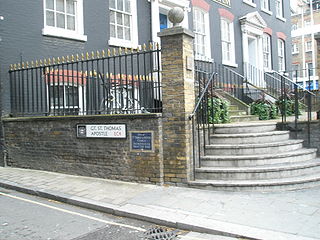
St Thomas the Apostle was a parish church in St Thomas Apostle Street in the City of London. In existence by the late twelfth century, it was destroyed in the Great Fire of London in 1666 and not rebuilt.

St Dunstan-in-the-East was a Church of England parish church on St Dunstan's Hill, halfway between London Bridge and the Tower of London in the City of London. The church was largely destroyed in the Second World War and the ruins are now a public garden.
St Margaret Lothbury is a Church of England parish church on Lothbury in the City of London; it spans the boundary between Coleman Street Ward and Broad Street Ward. Recorded since the 12th century, the church was destroyed in the Great Fire of London in 1666 and rebuilt by the office of Sir Christopher Wren. St Margaret Lothbury still serves as a parish church, as well as being the official church of five Livery Companies, two Ward Clubs and two Professional Institutes. It also has connections with many local finance houses, all of which hold special services each year.

St James Garlickhythe is a Church of England parish church in Vintry ward of the City of London, nicknamed "Wren's lantern" owing to its profusion of windows.

St. Mary Somerset was a church in the City of London first recorded in the twelfth century. Destroyed in the Great Fire of 1666, it was one of the 51 churches rebuilt by the office of Sir Christopher Wren. The tower is located in Upper Thames Street, the body of the church being demolished in 1871.
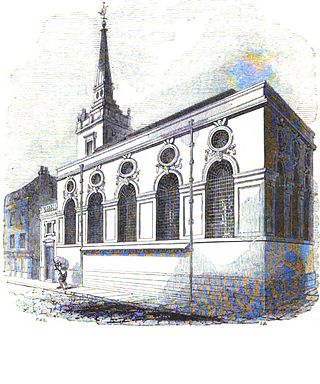
St. Michael Queenhithe was a church in the City of London located in what is now Upper Thames Street. First recorded in the 12th century, the church was destroyed during the Great Fire of London in 1666. Rebuilt by the office of Sir Christopher Wren, it was demolished in 1876.
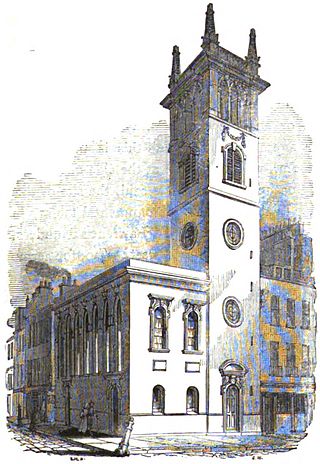
All Hallows Bread Street was a parish church in the Bread Street ward of the City of London, England. It stood on the east side of Bread Street, on the corner with Watling Street. First mentioned in the 13th century, the church was destroyed in the Great Fire of London in 1666. The church was rebuilt by the office of Sir Christopher Wren and demolished in 1876.

St Olave's Church, Old Jewry, sometimes known as Upwell Old Jewry, was a church in the City of London located between the street called Old Jewry and Ironmonger Lane. Destroyed in the Great Fire of London in 1666, the church was rebuilt by the office of Sir Christopher Wren. The church was demolished in 1887, except for the tower and west wall, which remain today.

St Michael Paternoster Royal is a church in the City of London. The original building, which was first recorded in the 13th century, was destroyed in the Great Fire of London in 1666. The church was rebuilt under the aegis of Sir Christopher Wren. However St Michael's was severely damaged during the London Blitz in the Second World War. It was restored between 1966 and 1968.

St George Botolph Lane was a church off Eastcheap, in the ward of Billingsgate in the City of London. The rear of the church overlooked Pudding Lane, where the fire of London started. It was first recorded in the twelfth century, and destroyed in the Great Fire of 1666. It was one of the 51 churches rebuilt by the office of Sir Christopher Wren. The church was demolished in 1904.

St Benet Gracechurch, so called because a haymarket existed nearby (Cobb), was a parish church in the City of London. First recorded in the 11th century, it was destroyed in the Great Fire of London of 1666 and rebuilt by the office of Sir Christopher Wren. The church was demolished in 1868.

St Benet Fink was a church and parish in the City of London located on what is now Threadneedle Street. Recorded since the 13th century, the church was destroyed in the Great Fire of London of 1666, then rebuilt to the designs of Sir Christopher Wren. The Wren church was demolished between 1841 and 1846.

St Antholin, Budge Row, or St Antholin, Watling Street, was a church in the City of London. Of medieval origin, it was rebuilt to the designs of Sir Christopher Wren, following its destruction in the Great Fire of London in 1666. The 17th-century building was demolished in 1874.

The church of St Mildred, Bread Street, stood on the east side of Bread Street in the Bread Street Ward of the City of London. It was dedicated to the 7th century Saint Mildred the Virgin, daughter of Merewald, sub-king of the West Mercians. Of medieval origin, the church was rebuilt to the designs of Sir Christopher Wren following its destruction in the Great Fire of London in 1666. One of the few City churches to retain Wren's original fittings into the 20th century, St Mildred's was destroyed by bombs in 1941.

St Michael's Wood Street was a church and parish of medieval origin in Cripplegate Ward in the City of London, and is first mentioned in 1225 as St. Michael de Wudestrate. It stood on the west side of Wood Street, initially with a frontage on Huggin Lane but later on Wood Street itself.

St Mary Colechurch was a parish church in the City of London destroyed in the Great Fire of London in 1666 and not rebuilt.

All-Hallows-the-Less was a church in the City of London. Of medieval origin, it was destroyed in the Great Fire of London in 1666 and not rebuilt.
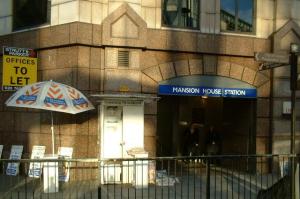
Holy Trinity the Less was a parish church in Knightrider Street in the City of London, destroyed in the Great Fire of London. Following the fire the site was used for a Lutheran church, which was eventually demolished in 1871 to make way for Mansion House underground station.
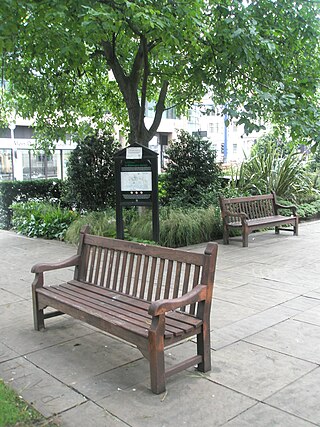
St Martin Vintry was a parish church in the Vintry ward of the City of London, England. It was destroyed in the Great Fire of London in 1666 and never rebuilt.






















